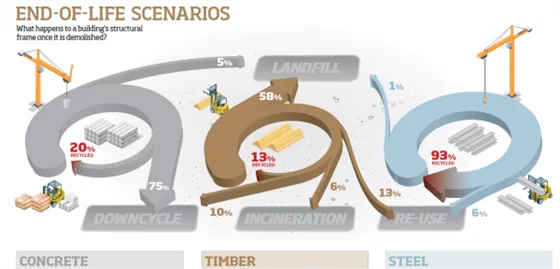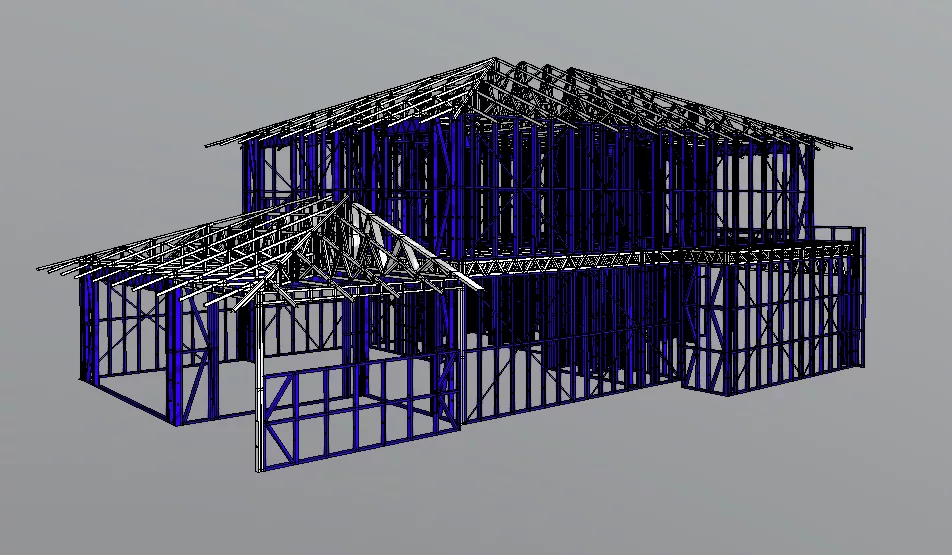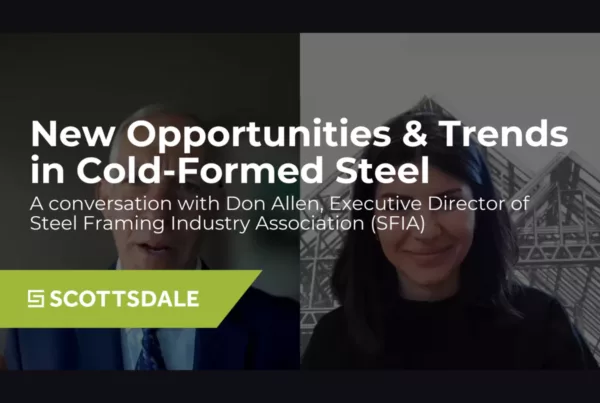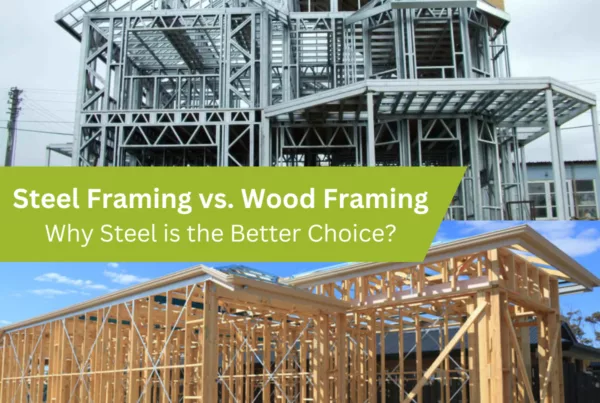In this article we address the rising construction costs, labor shortages, and environmental factors, alongside insurance and sustainability topics and how cold-formed steel homes are a solution to the global housing crisis.
Global Housing Challenges
The global housing crisis has been intensifying, characterized by a significant rise in homelessness, particularly in urban areas. A notable number of countries have experienced a surge in homelessness, with significant disparities between urban and rural areas. Issues like economic downturns, insufficient affordable housing, and income inequality all contribute to the crisis. In major cities around the world, the growing housing demand is not being met with adequate supply. Cities are often unable to keep up with housing development, leaving many to face overcrowded living conditions. The need for a comprehensive solution to housing insecurity has never been greater.
USA Housing Challenges
In the United States, housing affordability and urban inequality are closely linked. According to the United Nations’ Sustainable Development Goal (SDG) 11, the lack of affordable housing has become a pressing issue in cities across the country. The rapid growth of urban populations has outpaced the development of affordable housing, resulting in large portions of the population living in substandard conditions. Some major cities such as New York, Los Angeles, and San Francisco are particularly affected, with escalating rental prices putting enormous pressure on low-income residents. The SDG target of ensuring safe and affordable housing for all requires a broad and sustained effort to bridge these gaps, focusing not only on building more homes but also on rethinking how cities are planned.
California’s Housing Crisis
California’s housing situation is particularly dire, driven by skyrocketing rental prices and insufficient housing production. Since 2000, rents have risen dramatically, far outpacing income growth. The result is a vast affordability gap, particularly for low-income renters. For example, 78% of extremely low-income households are severely cost-burdened, spending over half of their income on housing, while only 6% of moderate-income renters face similar burdens.
Moreover, the production of affordable housing in California has not kept pace with demand. Despite some efforts to increase the supply of affordable homes, the state is only meeting 12% of its housing needs, leaving a huge gap. The ongoing affordability issues make it difficult for people to maintain secure housing. To address these challenges, we must investigate other building materials and housing solutions.
Why Cold-Formed Steel Homes are the Solution?
To address rising construction costs, labor shortages, and environmental factors, cold-formed steel (CFS) has become a game-changing solution in residential construction. While switching to steel homes may not resolve all housing crisis issues, it offers a highly effective alternative to traditional wood framing, providing cost effective, long-lasting, and eco-conscious solution for residential construction.
1. Construction Costs
Lumber prices skyrocketed by an astonishing 538% between March 2020 and May 2021 while steel prices rose a more modest 61% despite facing the same macroeconomic pressures cause by Covid-19. Fast forward to 2024, lumber prices skyrocketed by 47% between July and November while steel prices remained stable with only 1% increase.
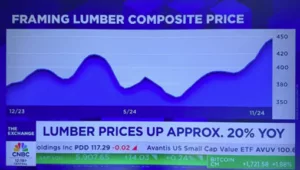 CFS provides homebuilders with a cost-effective alternative to traditional wood framing, particularly in the face of rising lumber prices. CFS significantly reduces ongoing operational expenses, and over the long term, it results in fewer maintenance and repair costs. Its resistance to environmental damage ensures that the steel home remains durable, leading to lower overall lifecycle costs for homeowners when compared to wood framing.
CFS provides homebuilders with a cost-effective alternative to traditional wood framing, particularly in the face of rising lumber prices. CFS significantly reduces ongoing operational expenses, and over the long term, it results in fewer maintenance and repair costs. Its resistance to environmental damage ensures that the steel home remains durable, leading to lower overall lifecycle costs for homeowners when compared to wood framing.
Additionally, CFS construction offers a smoother, faster building process. Its lightweight nature allows for easier handling and reduces labor costs. Moreover, the precision with which CFS components are manufactured will require less on-site adjustments, speeding up construction timelines. When considering the total cost of ownership, including maintenance, insurance, and long-term durability, cold-formed steel becomes a smarter financial choice, helping to mitigate the volatility of lumber prices and create more predictable construction costs for developers and homeowners alike.
2. Construction Time
Cold-formed steel can significantly save construction time on residential projects due to its precise manufacturing and ease of handling. Unlike traditional wood framing, which requires on-site cutting, measuring, and adjustments, CFS components are prefabricated with high accuracy. This reduces the need for alterations, allowing for quicker assembly. CFS framing components are also lighter than traditional steel, making them easier to transport and handle, further speeding up the steel home construction process. Additionally, the use of steel reduces the chances of delays caused by weather-related issues like moisture, which can impact wood framing by causing delays due to drying times and warping.
The efficiency of CFS extends to its assembly as well. With CFS framing members, construction crews can quickly install steel frames with minimal adjustments. This helps shorten construction schedules, particularly for projects requiring multiple floors or complex designs. Furthermore, CFS framing often requires fewer workers on-site, as the lightweight nature and pre-fabrication of the materials simplify the building process. All these factors combined result in faster project completion, which not only lowers labor costs but also allows developers to complete steel homes more efficiently and meet tight deadlines.
3. Labor Shortages
Cold-formed steel is an increasingly attractive solution for residential construction, particularly considering the ongoing labor shortage and the scarcity of skilled workers. Unlike traditional wood framing, which demands a high level of craftsmanship for precise cuts, measurements, and adjustments, CFS components are pre-engineered and prefabricated to exact dimensions. This reduces the need for specialized skills on-site, as the framing elements are ready for quick assembly with minimal adjustments. As a result, even workers with less experience can efficiently handle the materials, lowering the reliance on highly skilled labor and helping mitigate the impact of the skilled labor shortage.
Furthermore, the use of CFS allows construction projects to move forward more smoothly, despite workforce limitations. Since the materials are lightweight and easier to handle compared to traditional steel or wood framing, the need for large crews or specialized labor is significantly reduced. Prefabricated CFS components also ensure a higher level of precision, reducing the likelihood of costly mistakes or rework in steel home construction. In an environment where experienced labor is scarce, CFS offers a practical solution that accelerates the construction process while minimizing the dependency on highly trained workers, ultimately reducing project delays and costs.
Case Study
Saving Construction Time & Labor with Steel Homes
JT Living, the newest customer of Scottsdale Construction Systems, successfully built their first 1,500-square-foot steel home with CFS framing in just three days, despite having no prior experience. Two of their youngest employees, with no previous background in steel framing, assembled all the walls, steel roof panels, and steel floor trusses in the shop in under two days. Remarkably, these same two employees erected the entire structure in only two days, without the use of a forklift or crane.
The results? Perfectly plumb and level walls and ceilings, and a surprisingly sturdy construction. The accompanying images showcase the model, fabrication, assembly, and finished steel home. These photos also highlight the precision of the sheetrock, walls, and ceilings—straight, crisp, and flat—showing a marked difference from the wavy walls and ceilings often found in wood-framed homes.
4. Environmental & Natural Disasters
Fire
The Fire Safety Report highlights the significant economic risks associated with the use of combustible materials in mid-rise residential buildings in Los Angeles County, particularly focusing on the potential for increased fires. With the growth of residential construction and changes in building codes, combustible framing materials are now more commonly used, heightening the risk of catastrophic fires. The economic impact of such fires reach up to $22.6 billion over 15 years, including direct property damage and lost tax revenue. The report estimates that for every square foot of mid-rise residential construction, the economic loss could average $141.81, with up to $28.9 million in forgone tax revenues annually.
 The analysis underscores the growing vulnerability of Los Angeles County due to the widespread use of combustible materials in residential construction. The study’s projections, based on fire incidents in the region, show that in a single year, the county could face up to $1.7 billion in total exposure, including $1.3 billion in property damage. The use of combustible framing increases not only the direct costs of fire damage but also leads to significant indirect losses, including business disruptions and infrastructure damage. These findings emphasize the financial risks associated with choosing combustible materials for mid-rise residential buildings and suggest that the economic impacts may outweigh the initial construction cost savings.
The analysis underscores the growing vulnerability of Los Angeles County due to the widespread use of combustible materials in residential construction. The study’s projections, based on fire incidents in the region, show that in a single year, the county could face up to $1.7 billion in total exposure, including $1.3 billion in property damage. The use of combustible framing increases not only the direct costs of fire damage but also leads to significant indirect losses, including business disruptions and infrastructure damage. These findings emphasize the financial risks associated with choosing combustible materials for mid-rise residential buildings and suggest that the economic impacts may outweigh the initial construction cost savings.
Cold-formed steel is an ideal material for residential construction due to its noncombustible nature, offering significant fire safety advantages over traditional wood framing. Unlike wood, which can catch fire easily and contribute to the spread of flames, CFS is highly fire-resistant and does not burn. This crucial property makes CFS a safer choice, reducing the risk of structural collapse during a fire and providing more time for residents to evacuate. It also limits the extent of fire damage, potentially saving lives, reducing property loss, and lowering insurance premiums for homeowners due to the decreased fire risk.
Additionally, the non-combustibility of CFS contributes to the overall durability and longevity of residential buildings. Wood framing can weaken when exposed to heat or flames, leading to structural instability, while CFS maintains its strength and integrity even in high-temperature environments. This fire-resistant quality not only enhances the safety of the steel homes but also provides peace of mind for homeowners, especially in areas prone to wildfires or other fire-related hazards. By choosing CFS, builders and homeowners invest in a material that significantly improves fire safety and resilience, making it a smart, long-term option for residential construction.
Earthquake & Wind
Cold-formed steel is an exceptional building material for areas prone to seismic activity and high winds due to its superior strength, flexibility, and durability. In seismic zones, CFS offers enhanced structural integrity because it is both lightweight and strong, allowing buildings to withstand the forces generated by earthquakes without collapsing or suffering significant damage. Unlike wood, which can crack, split, or warp during seismic shifts, CFS maintains its structural shape and integrity, offering a more reliable frame during tremors. The inherent flexibility of steel also helps distribute seismic forces evenly throughout the structure, reducing the risk of localized failure or damage in steel homes.
Similarly, CFS excels in wind-prone regions, including areas frequently impacted by hurricanes or tornadoes. The material’s resistance to wind forces makes it a safer option compared to wood. CFS framing is designed to handle high wind loads, ensuring that the structure remains intact even under extreme weather conditions. Additionally, CFS components are tightly connected, reducing the risk of uplift or detachment during strong winds. The combination of strength, flexibility, and resilience makes cold-formed steel an ideal choice for residential buildings in seismic and wind zones, providing long-lasting protection against some of nature’s most powerful forces.
Mold, Rot, Split, Pests
Cold-formed steel offers a superior alternative to wood in residential construction due to its resistance to common issues such as mold, rot, splitting, and pest infestations. Mold will appear where there is water leak or damage on a property within 24 to 48 hours and approximately 47% of American homes have mold. Unlike wood, which is vulnerable to moisture and can easily absorb water, CFS does not warp, swell, or decay when exposed to damp conditions. This makes it an ideal choice in areas with high humidity or frequent rainfall, where wood structures are at a higher risk of mold and rot. Additionally, CFS is impervious to pests like termites, which are known to damage wooden framing and compromise the structural integrity of homes over time. The absence of these issues ensures that steel homes are more durable and require less maintenance compared to their wooden counterparts.
Moreover, CFS maintains its strength and stability throughout its lifespan, whereas wood is prone to splitting or cracking as it ages, especially if it is exposed to fluctuating temperatures or moisture. This durability of CFS not only improves the overall lifespan of the building but also reduces the need for costly repairs or replacements on homeowners. In regions where pest infestations, mold, and rot are common concerns, CFS offers peace of mind to homeowners, providing a more reliable and low-maintenance option for residential construction. Its long-term resistance to these environmental factors makes it a smarter investment in the durability and safety of a home.
5. Durability

Wood and lumber products today are not the same as they were 100 years ago. The structural capacity of modern lumber has been impacted by changes in how trees are farmed and processed. With increased demand for timber, trees are being cut down at a much faster rate than in the past, leading to younger, smaller trees being harvested. These trees often have narrower growth rings, which results in weaker, less dense wood that cannot match the strength and durability of older, slower-growing trees. In addition, modern lumber often undergoes treatment processes that can alter its properties, reducing its consistency and long-term performance.
On the other hand, CFS material are consistent in both material properties and structural integrity. Each steel component is precisely engineered, ensuring uniform strength and resilience across all components of the structure, making CFS a more predictable and reliable option for homeowners.
This consistency contributes to the material’s ability to stand the test of time, offering a superior alternative to wood in residential construction. Steel homes are a smart investment for homeowners seeking a low-maintenance, resilient building material that can withstand the rigors of time and environmental conditions.
6. Insurance
Cold-formed steel can lead to significant insurance savings for homeowners due to its noncombustible properties. Unlike wood, which is highly flammable and increases fire risk, steel homes are less likely to catch fire, leading to better loss histories and lower insurance premiums. Insurers often consider steel homes to be lower risk, which translates into reduced insurance costs, both during construction and for long-term property coverage. For example, using CFS can result in savings of up to 75% on builder’s risk insurance compared to wood-framed buildings. Additionally, property insurance premiums for steel homes tend to be lower, with savings of up to 50% on general liability insurance and 15-60% on workers’ compensation premiums.
Over time, these savings can add up. For instance, for a large hotel project, using cold-formed steel saved $1.32 million on builder’s risk insurance and $660,000 on property insurance over a 10-year period. These lower premiums are due to CFS’s superior fire resistance, which minimizes the risk of catastrophic loss. By reducing long-term insurance costs, CFS offers homeowners not only a safer living environment but also a more economical one, making it a smart choice for those looking to minimize both upfront and ongoing expenses.
7. Sustainability & Low Waste
Cold-formed steel is a highly sustainable building material, offering numerous environmental benefits, particularly in terms of resource conservation and waste reduction. One of the key advantages of CFS is its recyclability; it is 100% recyclable, and much of the steel used in CFS construction comes from recycled content, reducing the demand for raw materials and lowering the environmental footprint of construction. This makes it a more sustainable choice compared to wood, which requires extensive harvesting of trees, contributing to deforestation and resource depletion.
Additionally, CFS construction generates significantly less waste than traditional building methods. With the advent of smart technology and software in modern construction, the precision in the design and manufacturing of CFS components has dramatically improved. Advanced software allows for highly accurate building designs that are translated into precise, prefabricated steel components. This reduces the amount of material waste created on-site, as each piece is custom-cut to fit the specific requirements of the project. By streamlining the process and reducing material waste, steel homes not only lowers the environmental impact but also leads to cost savings and faster project completion. These technological advancements make CFS a more efficient, eco-friendly building material that supports the growing demand for sustainable construction practices.
Roll-Forming Steel Homes with Scottsdale Construction Systems
Scottsdale Construction Systems offers state-of-the-art roll-forming technology with supporting software. Our roll-forming machines consist of Scotpanel series, Scottruss series, and Knudson Framemaker series.
Scotpanel series produces C-section profiles for framing walls, steel roofs, steel trusses, and more and are used in residential, modular, light- commercial and industrial applications. Scottruss series produces hat-channel steel trusses for superior span and load capacity and are used in residential, commercial and industrial applications. Scotpanel and Scottruss systems complement each other and are portable and highly adaptable, making them an ideal solution for containerized factories in remote locations.
Knudson Framemaker series consist of KFS series, KFD series and KSE series. Knudson KFS series produces structural CFS stud and track profiles for residential, commercial and light industrial projects. Knudson KFD series produces non-structural CFS stud and track profiles in drywall, ceiling, and curtainwall framing applications. Knudson KSE series produces standing seam roof panels and specialized shapes for curtain wall panelizing, resilient channels, and other specialized applications.
We offer an extensive library of real-world projects and their corresponding models, all hosted on Sketchfab for easy access. Our collection includes a wide range of residential, commercial, and industrial projects of various sizes. In addition, we feature specialized structures such as A-frame homes, tiny homes, cabins, multi-unit residential buildings, and modular designs. Each model represents an actual cold-formed steel home, carefully fabricated using our advanced roll-forming technology.
The “Cold-Formed Steel Residential – Lexington 28” project, located in Sydney, AU, is a 3,186 square feet (296 square meter) cold-formed steel home. This project was manufactured using Scottsdale Construction Systems’ Scotpanel 7090 and Scottruss 6050 roll-forming machines, ensuring durability, precision, and quality in every aspect of the manufacturing process. This project emphasizes the use of advanced steel framing systems to create a robust and efficient home, showcasing Scottsdale’s expertise in roll-forming technology.
Scottsdale Construction Systems roll-forming machinery is supported by a suite of software including ScotSteel, ScotStruct, and ScotRF. ScotSteel is a 3D software that facilitates the design and engineering of cold-formed steel sections within the Scottsdale ecosystem. ScotStruct is an engineering tool that performs structural analysis and design of cold-formed steel using Direct Strength Method. And ScotRF is a comprehensive roll-forming and production management software. With seamless one-click exports and direct export capabilities, these tools work together to streamline workflows and ensure smooth transitions between steel homes design, engineering, and fabrication. This integration makes the process of building cold-formed steel homes both efficient and straightforward.
Steel Homes are the Future of Residential Construction
Cold-formed steel presents a compelling solution to the ongoing housing crisis. By offering a durable, cost-effective, and sustainable alternative to traditional wood framing, CFS addresses multiple issues facing the construction industry, including rising costs, labor shortages, environmental concerns, and the growing risk of natural disasters. Moreover, its resistance to mold, pests, and fire makes it a safer and longer-lasting option, ensuring steel homes remain secure and low-maintenance for years.
As the housing crisis continues to worsen, adopting CFS as a building material offers a viable path forward. Its ability to provide durable, fire-resistant, and affordable homes positions it as a key solution to global housing challenges. For builders and homeowners alike, CFS offers long-term benefits that help reduce both costs and risks, making it an essential tool in creating sustainable and resilient communities.
Scottsdale Construction Systems has been offering roll-forming machinery for over 80 years. We are a trusted expert in the cold-formed steel roll-forming business offering innovative solutions to our partners in the construction industry. For more information about Scottsdale Construction Systems solutions, call us at 1 (888) 406-2080 or email us at rollformers@scottsdalesteelframes.info.










